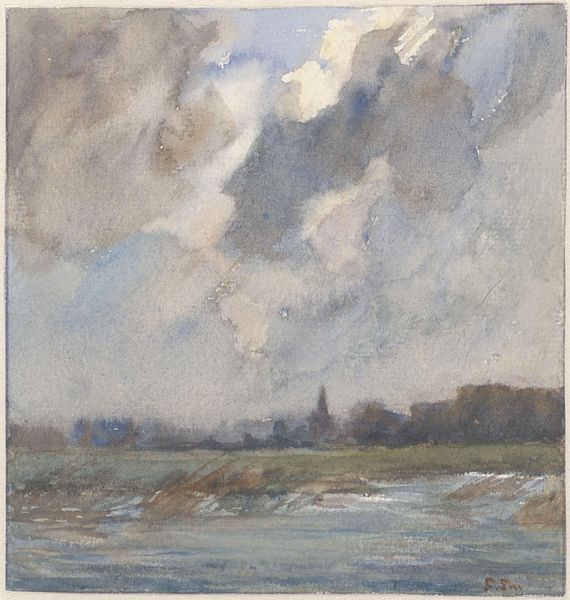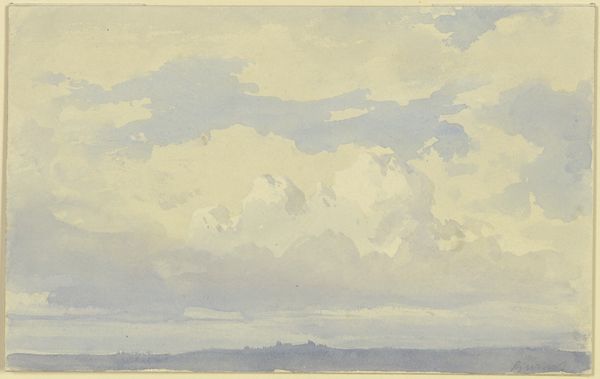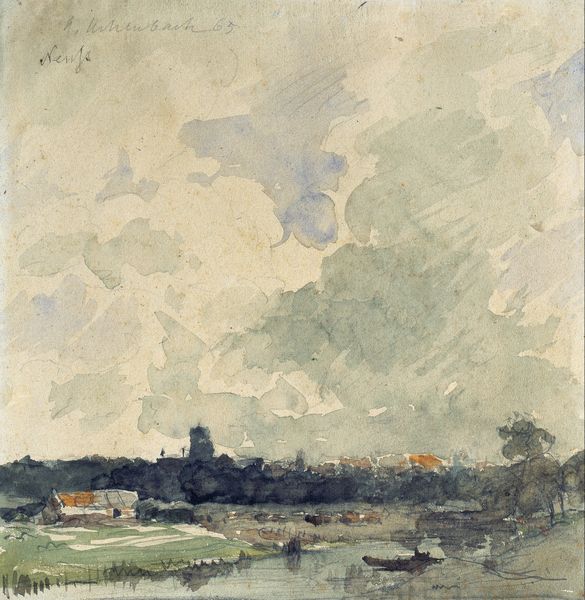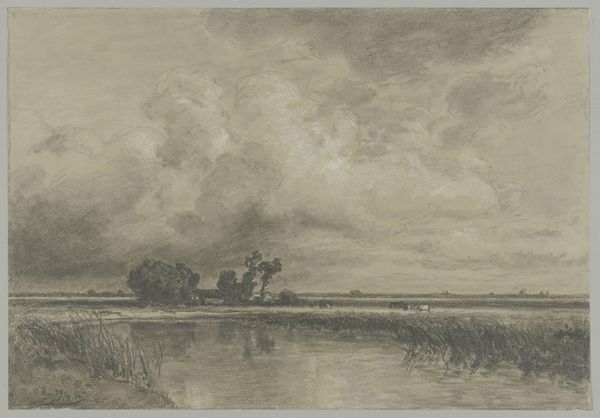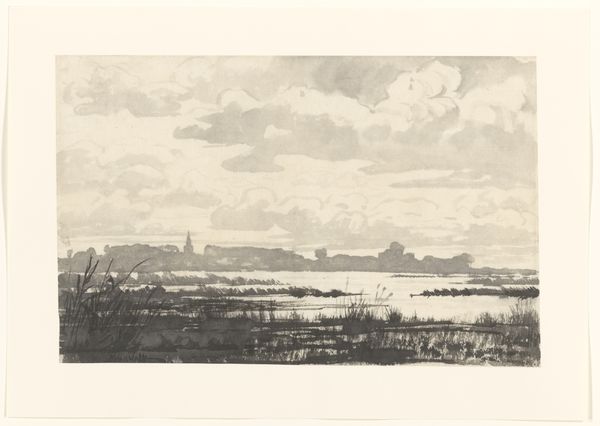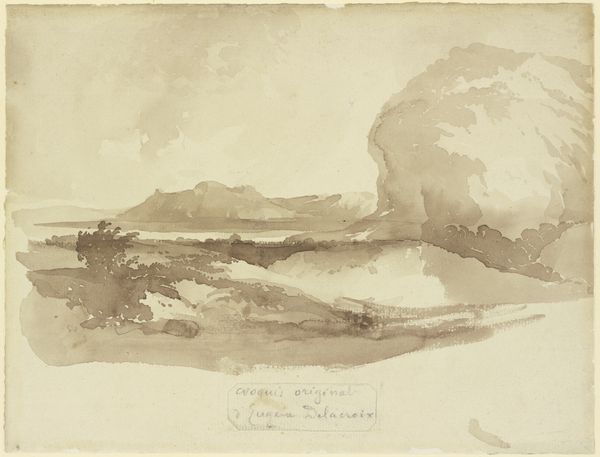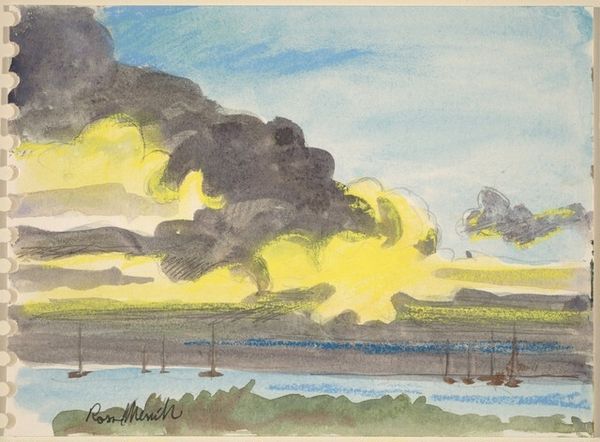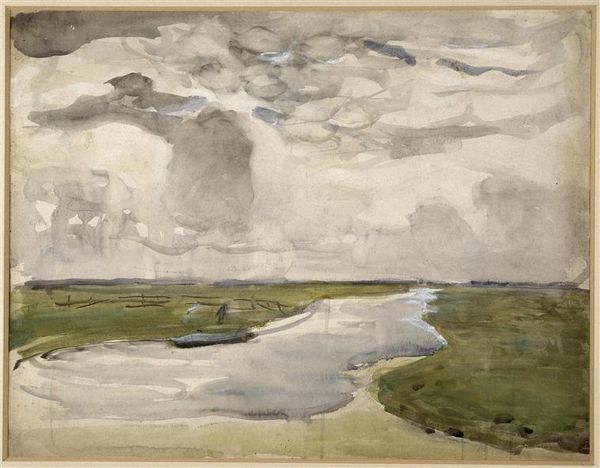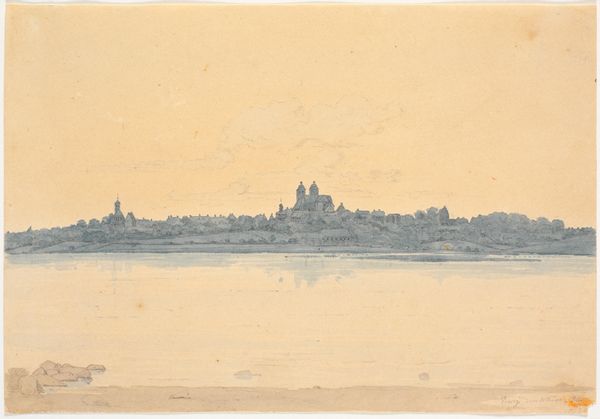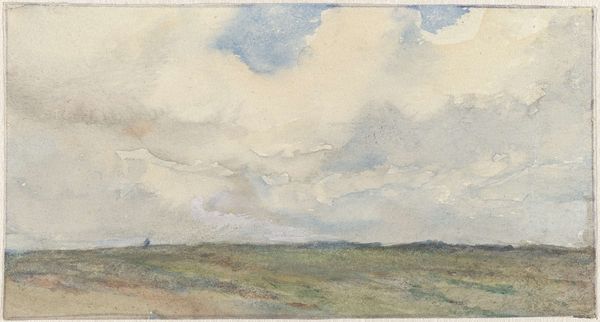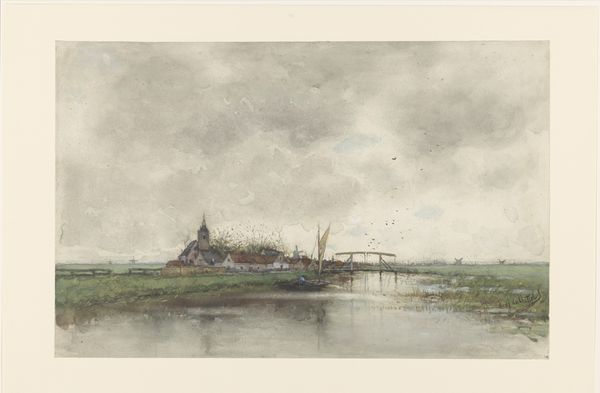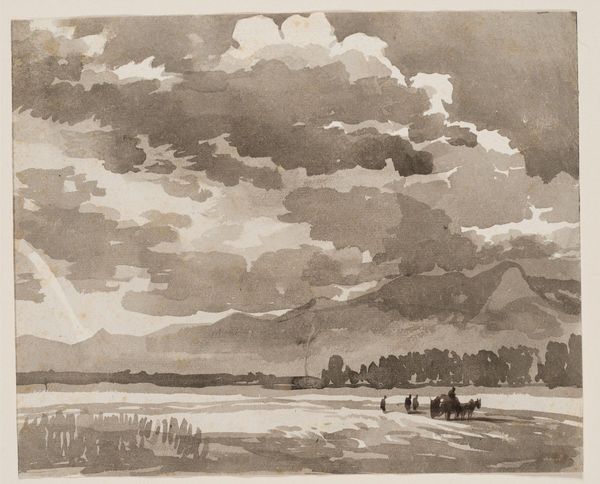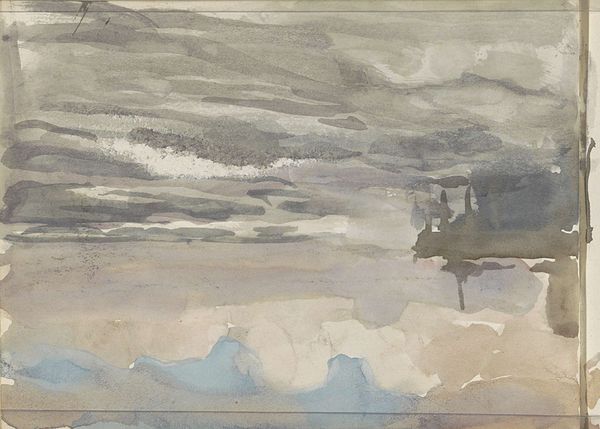
plein-air, watercolor
#
water colours
#
plein-air
#
landscape
#
watercolor
#
romanticism
#
watercolour illustration
#
watercolor
Dimensions: height 272 mm, width 382 mm
Copyright: Rijks Museum: Open Domain
Curator: This watercolour is entitled 'Gezicht op Gillingham Church, Kent,' which translates to View of Gillingham Church in Kent. It was created sometime between 1835 and 1865 by James Chisholm Gooden. Editor: It’s somber. The muted palette, dominated by those stormy greys in the sky, creates an atmosphere of stillness and perhaps a little melancholy. It makes me think about power. Curator: It's important to remember the context in which Gooden was painting. The Industrial Revolution was rapidly transforming the English countryside. Works such as this provided visual respite, emphasizing the pre-industrial world, romanticizing a connection to the land even as those connections were changing. Consider the labour that went into building that church. Who built it, for what, and under what conditions? Editor: True. And that church, solid against the landscape, also speaks to established hierarchies, to a power structure. But even its form—its silhouette—is softened by the watercolor medium, almost dissolving into the landscape. Was this an act of critique, perhaps subconscious, towards the institution of the church in the changing face of Victorian England? Curator: Or maybe simply a reflection on place? Notice how Gooden captures the particular atmospheric conditions of the region. I wonder about his experience, his process. What pigments were available? What was the price of watercolour paper at this time? And how did these factors affect his final product? Editor: Those are good points. But let's not ignore the potential subversive readings, especially within the rise of dissenting voices and discussions around class, gender, and industrial change that emerged during this period. The sky itself looms. Curator: Ultimately, I think this small artwork reflects a turning point in British society and the methods used for capturing place. Its materials and process point toward a specific socio-economic context of both production, but it leaves us room for speculation. Editor: Indeed. The visual dialogue Gooden establishes within this historical moment invites questions about agency, control, and ultimately, the ephemerality of it all in the face of both natural and societal change.
Comments
No comments
Be the first to comment and join the conversation on the ultimate creative platform.
